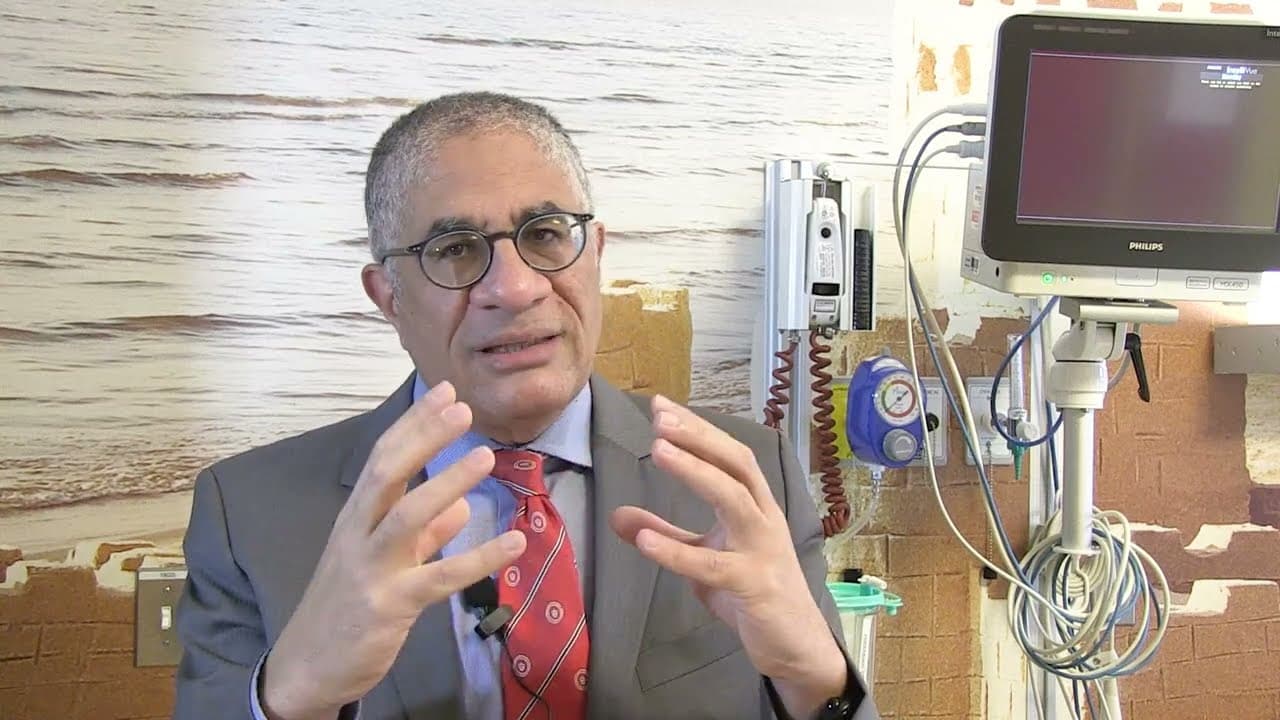NUSS procedure and cryoablation with Dr. Sherif Emil

NUSS procedure and cryoablation with Dr. Sherif Emil
Shriners Hospitals for Children — Canada logo, Dr. Sherif Emil, MD, CM, FRCSC, FACS, FAAP
Dr. Sherif Emil:
So cryoablation is a pain control method, and we use it in patients who are undergoing the NUSS procedure for pectus excavatum. That depression in the chest usually starts in adolescence and can be quite severe, causing heart compression, lung compression, and physical symptoms, or it can cause significant social disability because of the very abnormal shape and appearance of the chest. Many of these teenagers, most of whom are boys, will withdraw from sports, withdraw from social activities, and have very significant psychological issues. So it's an operation by correcting the chest wall anomaly using metal bars in a minimally invasive way. It's an operation that can often change the physical symptoms of a patient, but it can really change significantly the lifestyle of a patient. So that's what pectus excavatum is and the NUSS procedure that we use to fix it using metallic bars implanted in the chest in a minimally invasive way.
Now, the problem with this operation is that it's extremely painful. Despite it being minimally invasive using small incisions, changing the position of the bones of the chest is intensely painful. And so, it's really been the Achilles heel of the operation. How do we treat the pain? And there's been many, many methods of treating the pain. Here at Shriners, we often use epidural analgesia afterwards, but still the patients were in the hospital for 5, 6, 7 days. Patients were getting a lot of morphine and narcotics, which of course had its own side effects.
And so, in June of 2022, we introduced cryoablation. Cryoablation is a method that actually freezes the inside of the nerves, the intercostal nerves they're called, that travel in between under each rib and innervate the chest wall. If you can completely numb those nerves, then the patient will not have any pain sensation in the chest wall.
So the way we do it is, again, under camera vision. First, we inject the nerves, each under direct vision, with a local anesthetic using a special needle. And then, we use a special cryoprobe, which is what the cryoablation is, using liquid nitrogen at an extremely cold temperature, minus 60 degrees Celsius, and we treat every nerve by touching it for a period of two minutes. What that does is it literally freezes the nerves and destroys the neurons, the nerve fibers that travel inside the nerves, but it keeps the... The nerve is like a cable. There are fibers that travel, and then there is the envelope... the structure or envelope that contains the fibers. So that structure or envelope is actually the source that regenerates the fiber. So the idea is not to destroy the sensation forever, but to destroy the sensation during the time where the pain is most intense, which is the first few weeks after surgery.
Over time, these fibers will regenerate, and the cable will entirely reform and get back to normal. And that's the whole idea behind cryoablation. It's a temporary destruction of the nerve fibers that innervate the chest, knowing that they will regenerate usually within a few weeks to a few months, and patients will come back to complete sensation most of the time by six months after surgery.
And it has been truly revolutionary. So our patients, instead of staying in the hospital five, six, sometimes as long as 10 days, just treatment of the pain, there's nothing else about the operation that kept the patient in the hospital. It was just about treatment of the pain. Now our patients are leaving the hospital the next morning, comfortable using things like Tylenol and Advil, very few, if any narcotic usage, hardly any morphine. And really, the outcome of the operation has been dramatically changed with this cryoablation technique.